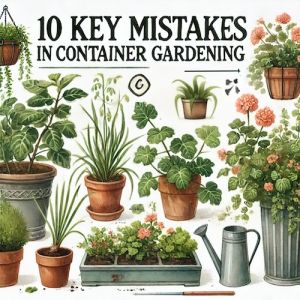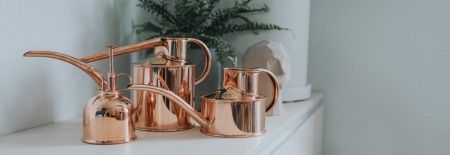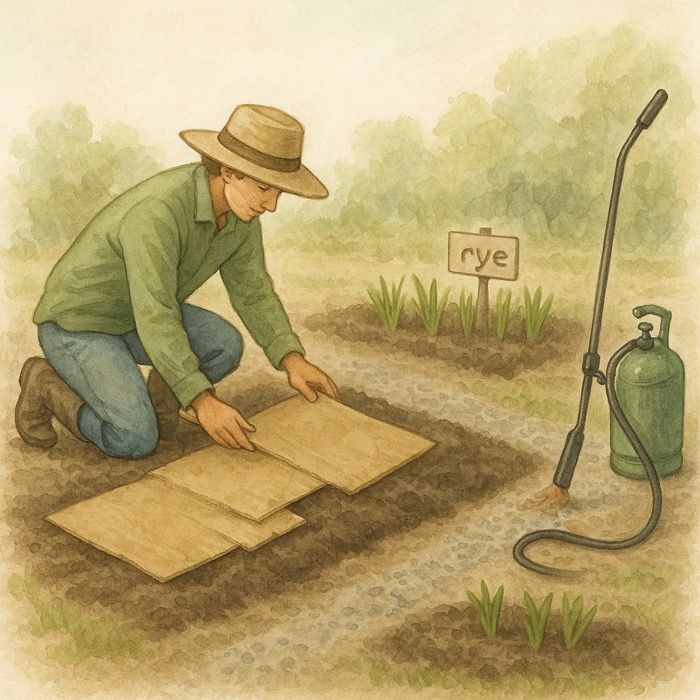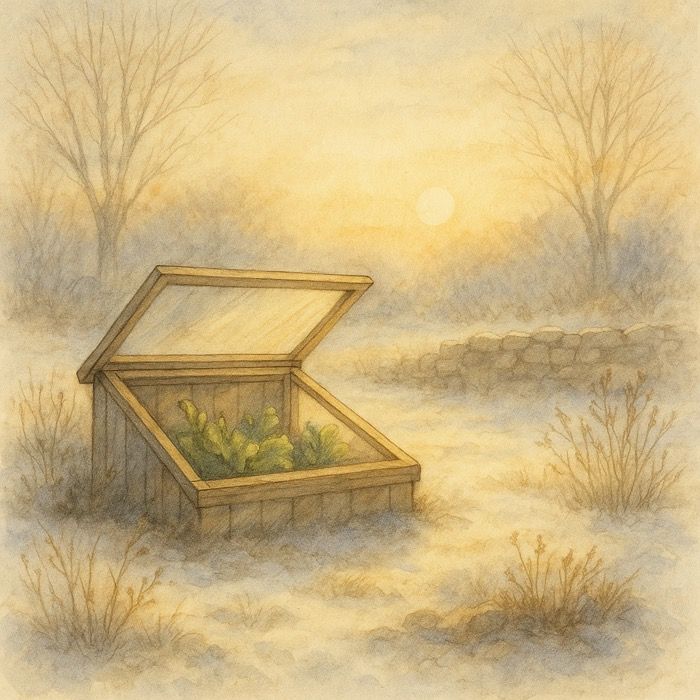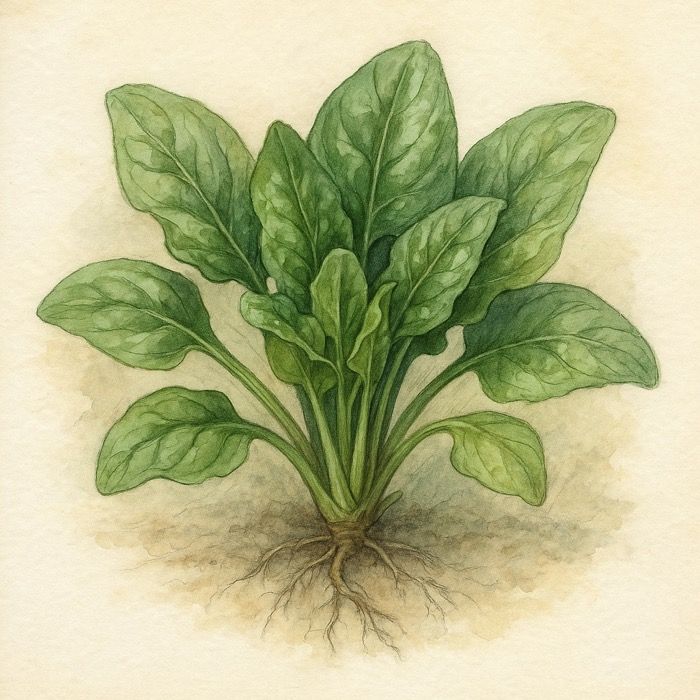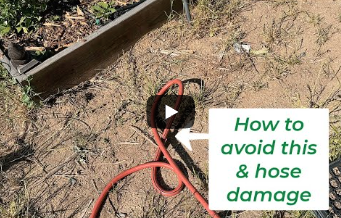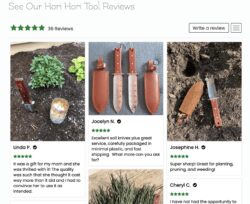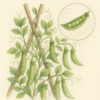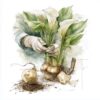10 Key Mistakes in Container Gardening
How to Avoid Common Pitfalls for a Thriving Garden
Introduction
Container gardening is a fantastic way to grow a variety of plants, even if you’re short on space. However, it’s easy to make mistakes that can hinder your success. To help you avoid these common pitfalls and ensure your container garden thrives, we’ve identified the 10 key mistakes gardeners often make. By steering clear of these errors, you’ll be on your way to a flourishing and productive garden, no matter your space constraints.
1. Choosing the Wrong Container
Selecting the appropriate container is critical for your plants’ health. A common mistake is choosing a container that’s too small or lacks proper drainage. Small containers can restrict root growth, leading to stunted plants, while poor drainage can cause waterlogged soil and root rot. Always opt for containers with drainage holes and choose a size that allows ample room for root expansion.
Master Gardener Tip – When you reuse old pots, make sure to clean and sanitize them with a container or pot brush. Old spores, bacteria and pests can resurface in infected pots and ruin your new plants.
2. Reusing Soil Without Refreshing It
Using the same soil from season to season without refreshing it is a major error. Over time, soil in containers loses nutrients and structure, which can lead to poor plant health. Refresh your soil by adding compost, organic matter, or fresh potting mix at the start of each growing season to provide the necessary nutrients and improve soil structure.
3. Overwatering Your Plants
One of the most common mistakes in container gardening is overwatering. Containers tend to dry out faster than ground beds, but this doesn’t mean you should drown your plants. Too much water can suffocate roots, leading to root rot and fungal diseases. Always check the moisture level of the soil before watering by sticking your finger an inch or two into the soil. If it feels dry, it’s time to water.
4. Ignoring Sunlight Requirements
Not all plants thrive in the same light conditions. A common mistake is placing sun-loving plants in too much shade or shade-loving plants in direct sunlight. Before selecting plants for your container garden, assess the amount of sunlight your space receives and choose plants accordingly. Most vegetables and herbs need at least six hours of sunlight, while some flowers and leafy greens can tolerate partial shade.
5. Overcrowding the Container
It’s tempting to fill your containers with as many plants as possible to create a lush look, but overcrowding can lead to problems. Plants need space to grow, and when they are too close together, they compete for nutrients, water, and light, which can weaken them and make them more susceptible to pests and diseases. Follow recommended spacing guidelines for each plant type to ensure they have enough room to thrive.
6. Using the Wrong Type of Soil
Another common mistake is using garden soil or dirt from your yard in containers. This type of soil is often too dense and doesn’t drain well, which can lead to poor root health and waterlogged conditions. Instead, use a high-quality potting mix specifically designed for containers, which provides the right balance of nutrients, aeration, and drainage.
7. Neglecting to Fertilize
Container plants rely on you to provide the nutrients they need to grow. Many gardeners forget to fertilize regularly or use the wrong type of fertilizer. Containers have limited soil, which means nutrients are quickly depleted, especially with frequent watering. Use a balanced, slow-release fertilizer or liquid feed every couple of weeks during the growing season to keep your plants healthy and productive.
8. Forgetting to Rotate Containers
If your container garden is in a spot where the sun’s position changes throughout the day, it’s important to rotate your containers regularly. Failing to do so can cause your plants to grow unevenly as they reach for the light. Rotating your containers ensures that all sides of the plant receive adequate sunlight and promotes even growth.
9. Ignoring Pests
Pests can be a big problem in container gardening, and one of the most detrimental mistakes is ignoring the signs of infestation. Aphids, spider mites, and whiteflies can quickly take over your plants if left unchecked. Regularly inspect your plants for pests and take action immediately if you see any signs. Organic pest control methods like neem oil, insecticidal soap, or introducing beneficial insects can help keep your container garden pest-free.
10. Not Adjusting Watering Habits for Weather Changes
Weather can greatly impact how often you need to water your container plants. A common mistake is sticking to a rigid watering schedule without considering changes in temperature or humidity. In hot, dry weather, your plants may need more frequent watering, while in cooler, wetter conditions, they may need less. Monitor the weather and adjust your watering habits accordingly to ensure your plants stay healthy.
Conclusion
By avoiding these 10 key mistakes in container gardening, you can create a thriving, beautiful garden even in the smallest of spaces. Remember to choose the right container, refresh your soil, water correctly, meet your plants’ sunlight needs, avoid overcrowding, fertilize regularly, and stay vigilant against pests. With these tips, your container garden will be set up for success.
For more expert tips and guides on container gardening, be sure to visit our blog and subscribe for updates!
More From Our Master Gardener
Recent Posts

5 Unexpected Winter Weed Control Strategies (That Don’t Involve Mulch)

Harnessing Winter Sun – Passive Solar Tricks for Your Garden

How to Grow Spinach – The Ultimate Beginner’s Guide for Tender, Nutritious Leaves

How to Grow Peas: The Ultimate Beginner’s Guide for Sweet, Crisp Harvests

How to Propagate and Dig Up Calla Lilies – A Step-by-Step Guide
